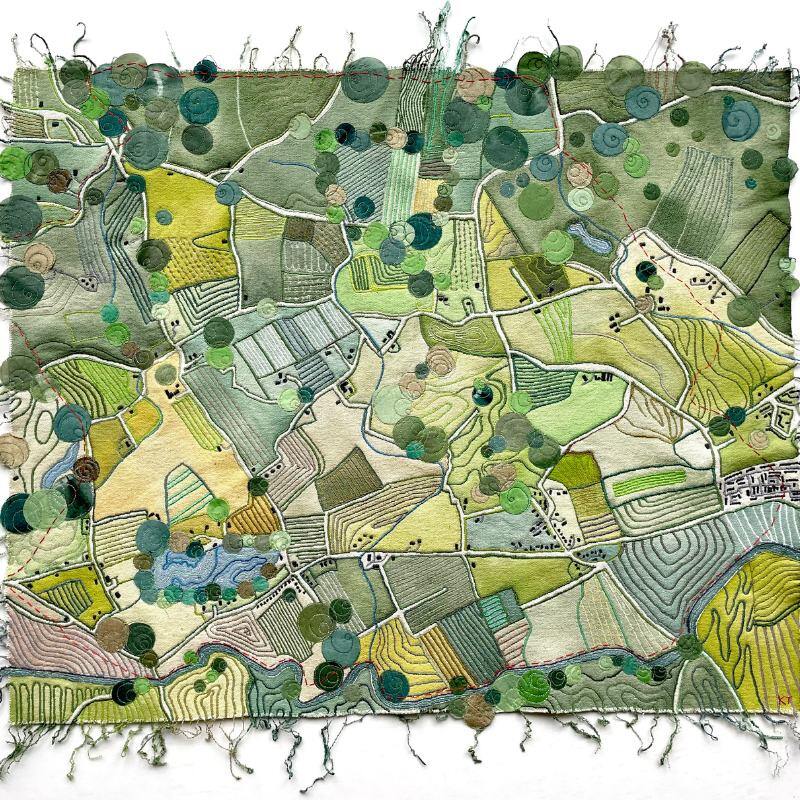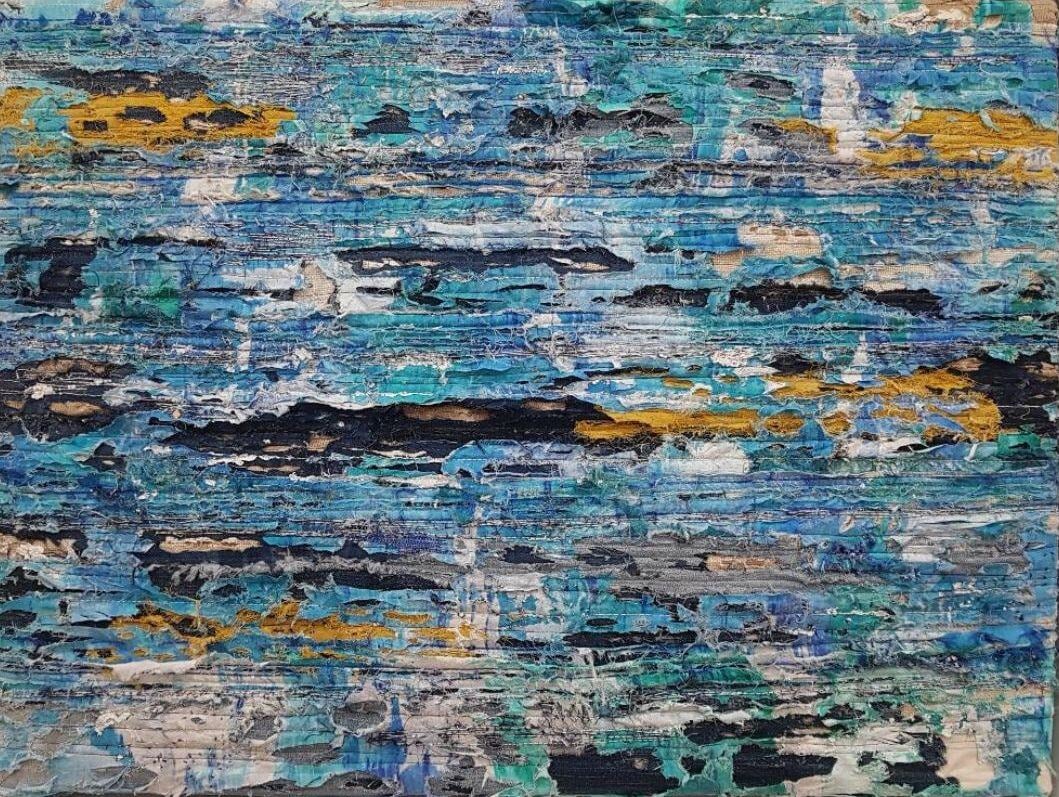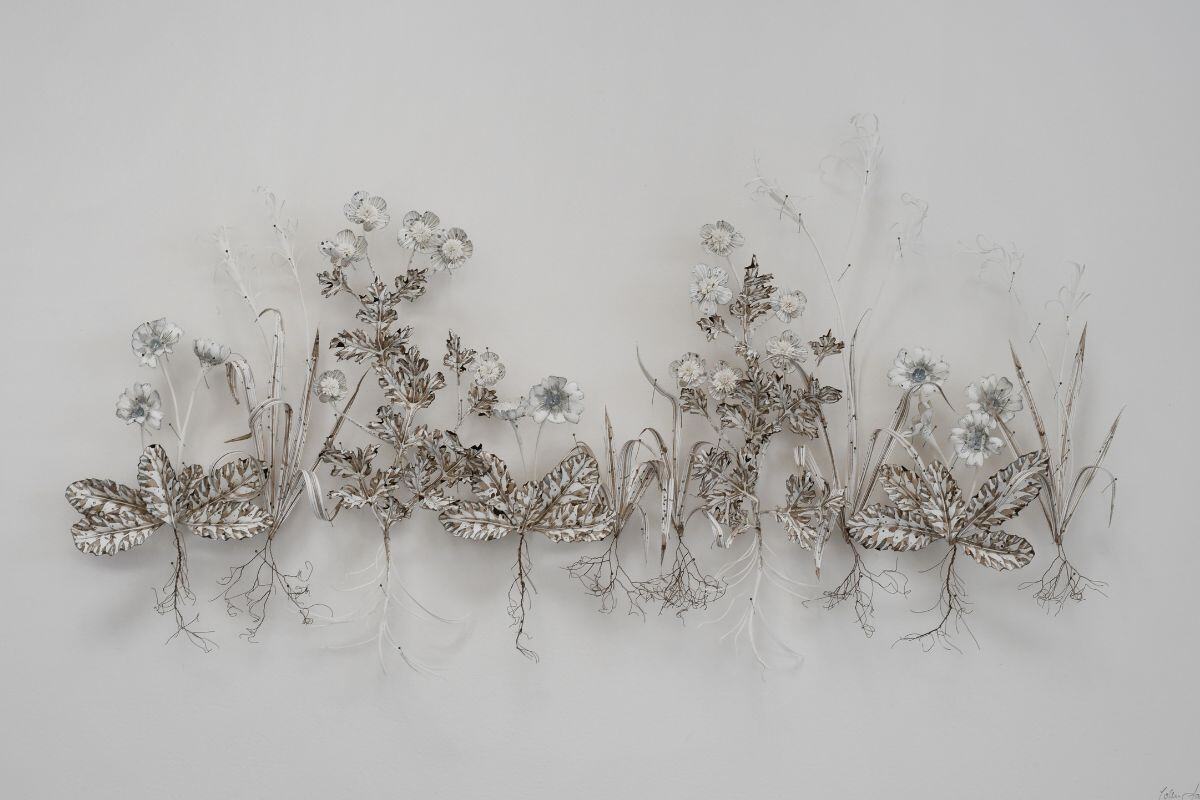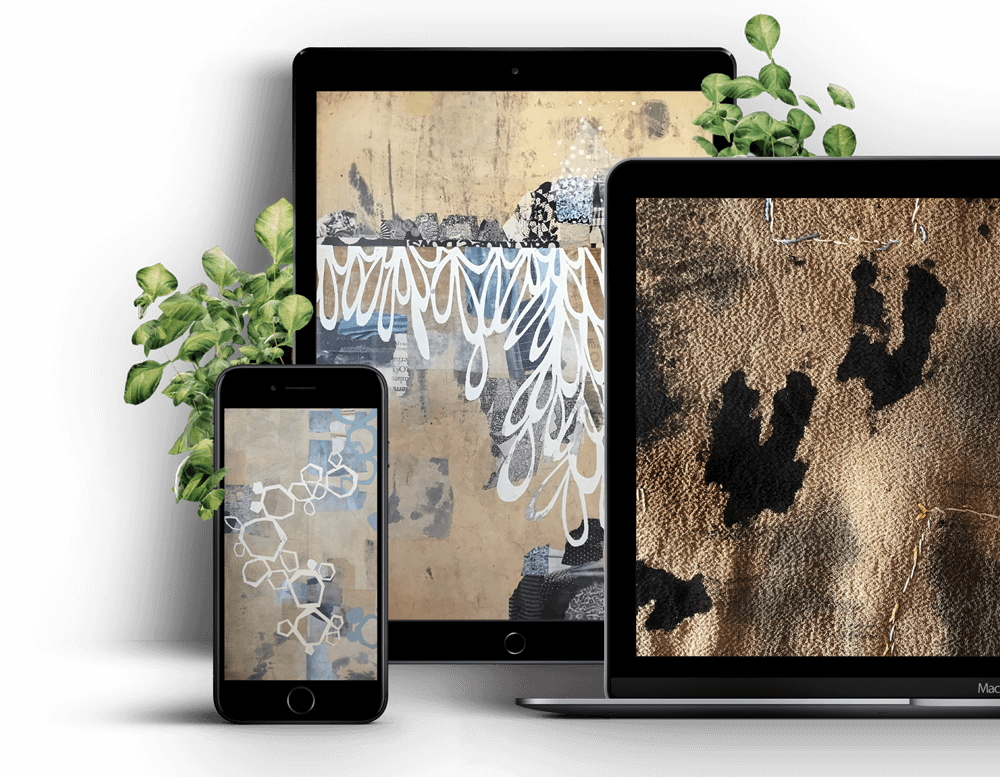Deborah Kruger
Artist Deborah Kruger creates stunning feathers from recycled plastics. Fibre Arts Take Two learnt more about Deborah’s long journey to overnight success.
Deborah Kruger’s Friday Feature Artist Interview can be found at the bottom of this page.
Deborah Kruger is an award-winning contemporary fibre artist who creates textile paintings, sculptures and installations that give voice to endangered birds, endangered indigenous languages and ecological disasters.
For over ten years, Deborah has made art from feathers, feathers that are fabricated from plastic bags in caustic wax, linen thread, wire and horsehair. Her pieces are influenced by the indigenous art from the Amazon, which often incorporates feathers into their ceremonial objects.
Some recent career highlights include an upcoming solo exhibition at Tennessee Tech University in 2023. Her prize-winning work was featured at the Bernard Heller Museum in New York City, the contemporary art museum in Raleigh, North Carolina, the Atlanta Hartsfield International Airport in Atlanta, Georgia, and the Diego Rivera Museum in Mexico City.
Perhaps the most exciting news is that two of Deborah’s large-scale environmental artworks have been acquired by the Museum of Art and Design in New York City and will be on view in May 2024. Deborah recently shared her unique perspectives on life and art with Fibre Arts Take Two.
Making Feathers
Deborah creates her feathers from layer after layer of recycled plastic, “I’ve lost count of how many different layers there are to each feather,” she says, “but I think I would probably guess 20 different things go into making a feather. It’s a very complex process. In many ways, I think there’s so much information you can pack in when you have a complex process. So I developed this technique to say as many things as I wanted about endangered birds and indigenous languages.”
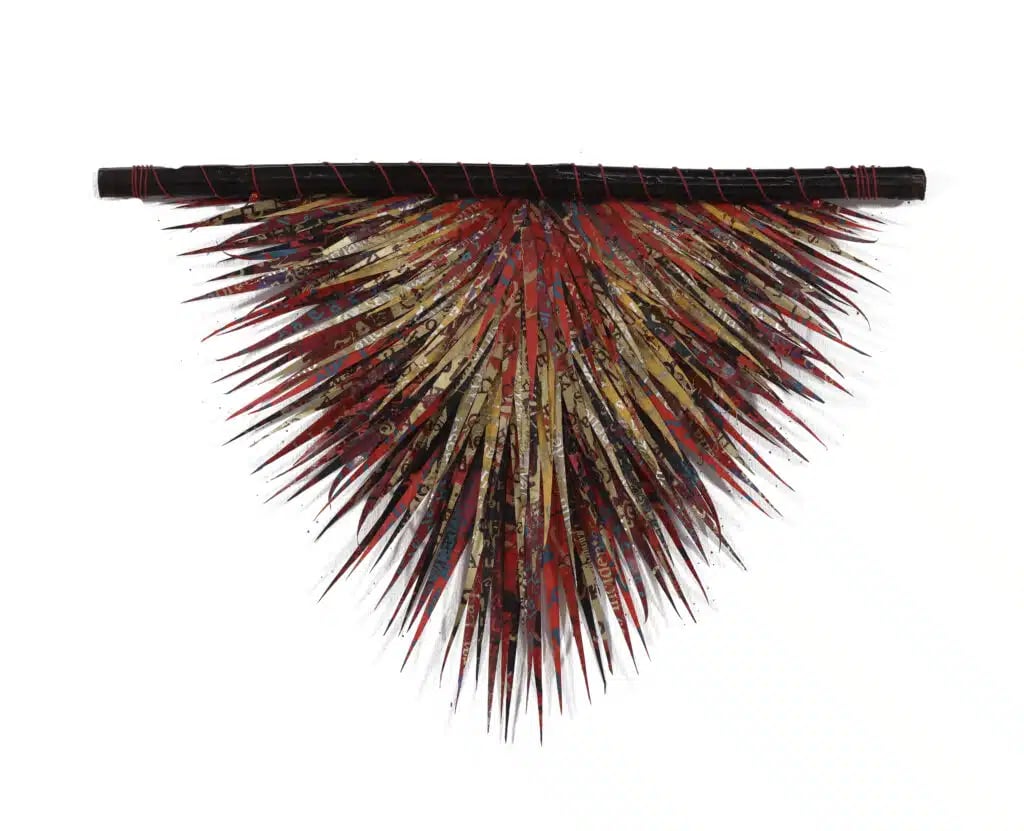
The ‘aha’ moment
While she has always been an artist, Deborah’s focus on feathers came to her a little later in life, “My training originally was at FIT in New York. I was trained as a textile designer and spent the first ten years designing wallpaper. So pattern, decoration, and design are hardwired into me at this point.”
Despite this hardwiring, the cohesion that Deborah was unknowingly seeking was yet to come, “I had an ‘aha’ moment,” she says, “I do also run a residency programme, and when people would apply for the residency, I would find myself saying some of the same things over and over as feedback and one of them was, ‘your ideas are great and your work is really strong, but they’re not integrated’. And I think it’s when, as artists, we can integrate our ideas, our form and our content that the work gets really juicy and powerful.
One sad day I realised that that was true of my own artwork, and at that point, I felt that I was saying that my work was about endangered birds, but if I wasn’t there to say that, the result wasn’t saying it clearly enough.”
Deborah took a year off after her ‘aha’ moment to find a way to integrate her own work. In the end, she settled on the plastic that she uses to this day, “I felt that using plastic,” says Deborah, “especially recycled plastic, so that I wasn’t like polluting, was a way to embed a narrative about problems that are creating loss of species of birds.”
Birds of a feather
Deborah’s choice of feathers was also far from arbitrary, “I am particularly enamoured of birds,” she says, “Birds are stand-ins for any species that are declining. And unfortunately, that’s most of them, including us. We’re also losing our habitats. And that’s also part of the problem of losing indigenous languages. So by choosing to use plastic and then going back to my design and silk screening roots, I could re-integrate the specific images of birds and then overlay the indigenous languages. The content of my work is embedded in every single feather.”
Moving to Mexico
“I’m a great believer in silver linings,” says Deborah, “If you look for it, there’s always something good in every hardship, every disaster.”
This is no idle comment on Deborah’s behalf as a life-changing disaster led to her current success, “I owned a medical billing company,” explains Deborah, “There couldn’t be anything further from an art life, although I always was an artist and always had a studio, and I showed a little bit, I was a single mum, and I didn’t have a lot of time. I had a terrible flood at my house in the US 12 or 13 years ago, and the upshot was that I ended up moving to Mexico. I came to Mexico because of a financial disaster, but it ended up being the best thing that could have possibly happened to me as an artist. So you’ve just got to listen to the messages coming through in life. “
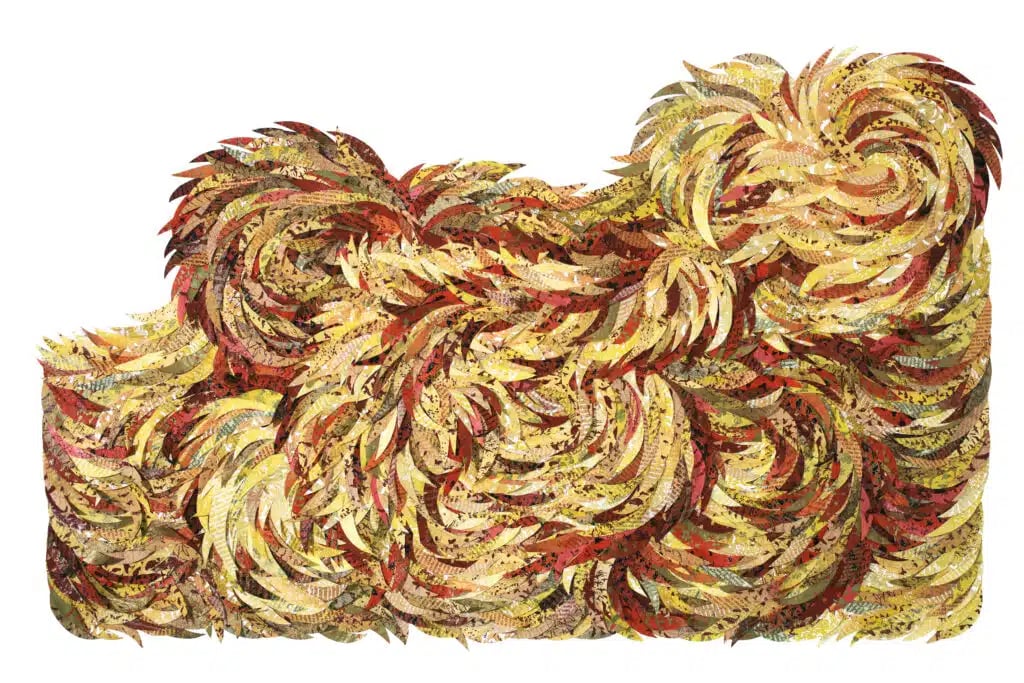
Team-based practice
As an artist, Deborah no longer creates on her own, “I have what I call a team-based practice,” she says, “What that means to me is that I have, every week, at least four Mexican women working in my studio doing various things that make it possible for me to produce the 1000s of feathers that I need in order to make the large work. And there’s no way I could do it without them.”
“When I moved to Mexico,” continues Deborah, “it was only after living here a few years that I realised, ‘Oh, I can have the space that I couldn’t afford north of the border’ I have the team that I couldn’t afford north of the border, and I have the time because I had retired. So that was a very fortunate constellation of events.”
Support
Deborah’s team aren’t the only people she credits with aiding in her success, “I have been very fortunate throughout my life to have mentors and supporters and benefactors, people who rally me,” says Deborah, “And while I wouldn’t say I’ve been as confident as I may appear right now, I never doubted that I was an artist, and I never doubted I was a good artist because too many people were telling me that I was. I want to encourage people to have mentors and supporters.”
The overnight success that took 40 years
For many people, Deborah’s success seems to have come from almost nowhere, an overnight success, you might say.
Deborah knows otherwise. “I think that’s an interesting thing in our world, how we see the overnight success, the, ‘Wow, she’s made it overnight.’ I’ve been an artist for 40 years! One of my friends always says, ‘Oh, you’re the overnight success that took 40 years’; there are 40 years of hard work behind it. I also want to put out there as an encouragement to everybody that it is also never too late. It is never too late to make it and never too late to do what your heart wants to do.”

About the artist
Wallpaper design and patterning have influenced Kruger’s work since her training in textile design at the Fashion Institute of Technology in New York City. She has taught, lectured and exhibited her artwork in museums, galleries and universities throughout the US, Mexico, Europe and Australia since the 1980s.
Recent career highlights include a 2022 solo exhibition titled Avianto at the Train Station Museum Chapala, Mexico. Parts of this exhibition, plus new work, will be featured in a solo exhibition at the Joan Derry Berry Gallery at Tennessee Tech University in 2023.
Two of Kruger’s large-scale environmental artworks have been acquired by the Museum of Arts and Design (MAD) in New York City and will be on view beginning in May 2024.
Her prize-winning work was featured at the Bernard Heller Museum NYC, the Contemporary Art Museum in Raleigh, NC, the Atlanta-Hartsfield International Airport in Atlanta, GA, the Diego Rivera Museum in Mexico City, and the Saco Art Museum, Saco, ME.
Deborah has attended residencies at the Millay Colony for the Arts, Austerlitz, NY, La Porte Peinte Centre, Noyers-sur-Serein, FRANCE and a residency at Hypatia-in-the-Woods, Shelton, WA.
Kruger maintains studios in the vibrant art community of Durham, NC and in the lakeside village of Chapala, Mexico.
Her art practice balances making objects of beauty that convey layered meaning about habitat fragmentation, bird migration, species extinction and loss of indigenous languages.
Notifications
Join Our Newsletter
OUR YOUTUBE CHANNEL
View our interviews and more on our Youtube channel!
OUR FACEBOOK GROUP
Join our Community and stay updated with our upcoming announcements!

